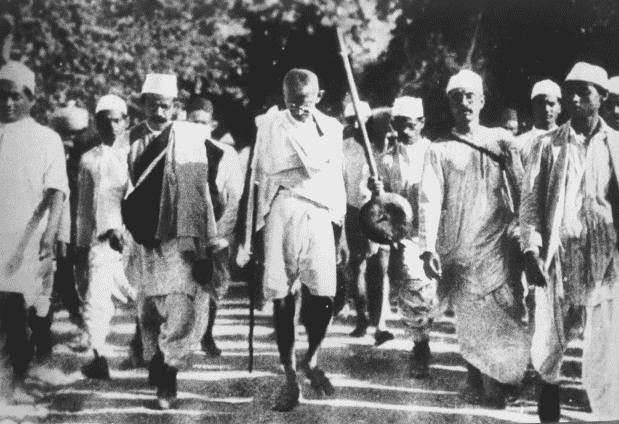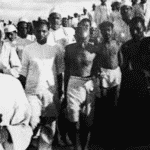-
Indigo farmers in Bihar had suffered under white planters since the 19th century. They were forced to cultivate indigo which brought them extremely poor remuneration and to raise money for a variety of unusual and illegal cesses called abwabs.
Rajkumar Shukla, an indigo farmer, met Gandhi at the Lucknow Congress in 1916 and urged him to visit Champaran. It was his determined efforts that brought Gandhi to rural Bihar.
Gandhi arrived in Patna for the first time on April 10, 1917, and five days later, he reached Motihari, the district headquarters of Champaran, from Muzaffarpur. On April 17, he started his Champaran satyagraha to champion the cause of Indigo farmers there.
This is the centenary year of that landmark struggle that resulted in the first successful civil disobedience movement in India. Champaran was the first of 3 movements during 1917-18 that marked the entry of Gandhi and civil disobedience in Indian politics.
Also Read: Bangladesh Liberation War– Role of India in the War
The Champaran and the subsequent localized movements in Ahmedabad and Kheda became the learning grounds for massive nation-wide protests that Gandhi embarked upon from 1919 onwards.
By 1917, the indigo farmers were forced to follow the tinkathia system whereby they were forced to cultivate indigo on three out of 20 parts of their land.
Besides getting a poor return on indigo cultivation, they were also subject to almost 40 different kinds of illegal cesses and taxes called abwabs.
Read in Hindi: चंपारण सत्याग्रह के 100 साल- Champaran Satyagraha in hindi
The peasants tried to rebel many times against such oppression but all such movements were suppressed ruthlessly.
Along with a group of trusted associates, mostly local lawyers, Mahatma Gandhi toured the region persistently, recording the statements of the cultivators.
Also Read: Savitribai Phule’s 186th Birthday- Remembering Her
His plan was to carry out an extensive inquiry in the district and demand action based on its findings. The local authorities were not happy with the visit of Gandhi and they unsuccessfully tried to dissuade him from undertaking his inquiry. But Gandhi began his task from the house of Babu Gorakh Prasad in Motihari, headquarters of the district.
Gandhi was ordered to leave immediately but he refused, telling the administration that he would rather take the punishment for disobeying the law. This was a new maneuver, and the government, not prepared to use force immediately, took a step back.
Gandhi went about investigating the grievances of the peasants. Accompanied by Rajendra Prasad, Mahadev Desai, and J B Kripalani among others, he went about, recording detailed statements in the manner of modern commissions of inquiry.
Eventually, the government was forced to appoint a Commission of Inquiry nominating Gandhi as one of its members. He had already collected the testimonies of 8,000 peasants and the evidence was hard to refute.
When Gandhiji was charged with “creating unrest” following his on the spot assessments of peasant exploitation, talks with the farmers and their mobilization, there was a massive show of strength in his support which forced the judicial officer to withdraw the case against him in Motihari.
The message had spread that the British were about to jail Gandhiji, triggering an outflow of farmers from every nook and corner of the district to the district court.
In a nutshell, the Champaran Satyagraha, even though the word Satyagraha came to be used more frequently during the protest against the Rowlatt Act agitation, triggered the first non-violent struggle anywhere in the world on such a large scale.
Gandhiji’s Satyagraha forced the British rulers to relent and the tinkathia system was abolished. The planters partially refunded the money that they had extracted from the peasants.
The success of the first civil disobedience movement is all the more significant because, as Gandhi said, when he arrived, no one knew him (despite his fame from his South African days) and the Congress party was practically unknown in those parts. But the real significance of Champaran was, in the words of his biographer DG Tendulkar, the fact that Gandhi “forged a weapon by which India could be made free.”
Champaran movement saw the earliest demonstration of the Gandhian political strategy — an attack on the existing structure using constitutional space available within the structure, in combination with elements of extra-constitutional struggle.
Source: The Hindu, Hindustan Times, Daily pioneer, Indian Express
Champaran Satyagraha- 100 years of the movement

Leave a comment









